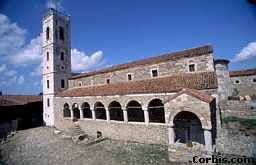| Group | Single |
| Geography | Spoken in Albania and in several districts of Yugoslavia (Kosovo), Italy, Greece and Macedonia. |
| History | First Albanian texts date back to the 15th century, though the people of Albania had lived there for quite a long time. Albanian is a descendant of ancient Paleo-Balkan languages, Illyrian, Messapic and Thracian. Historically two main dialectal groups exist: Gheg and Tosk, both understand each other. |
| Phonetics | Albanian has 7 vowels and 29 consonants. Gheg has a set of nasal vowels which are absent in Tosk. Another peculiarity is the middle vowel reduced at the end of the word. Several dental fricatives exist [], [], sounds [r] and [l] can be weak or strong. The original Indo-European phonetic system was destroyed in Albanian after diphthongs disappeared, and unstressed vowels were dropped. The stress is fixed mainly on the penult. |
| Nominal Morphology | The system of inflections was reduced but still preserved. The noun can be masculine, feminine or neuter, there are 4 types of declension with 6 cases including ablative (though dative and genitive coincided). The article can be posited either before or after the noun. |
| Verbal Morphology | Albanian develops an analytical structure of the verb. Its complex system of moods (6 types) and tenses (3 simple and 5 complex constructions) is distinguishing among other languages of the Balkans. There are two general types of conjugation. |
| Lexicon | Besides the original Indo-European vocabulary, Albanian includes numerous loanwords from Greek, Turkish, French, Slavic, Italic, borrowed in different periods of its history. |
| Writing | Latin alphabet |
| Close Contacts | Albanian is genetically connected with Illyrian and Messapic languages, there are also Thracian elements in it. In the Middle Ages Albanian was situated within the Balkan language unity and generated significant features characteristic for all tongues of the peninsula. Most contacts took place with Bulgarian, Greek, Turkish, Romanian. |
| Sample | Sepse Perndia kaq e deshi botn, sa dha
Birin’e ti
t-vetmlindurin, q t mos humbash kushdo ,brq t’i besonj ati, po t ket te-prjetshme. For God so loved the world that he gave his only begotten Son, that
|
| Picture |  |
| More info |